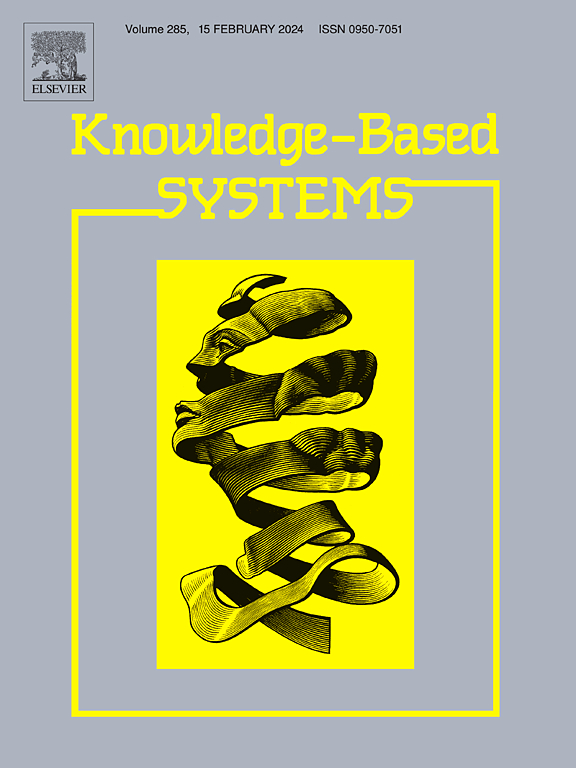Robust block tensor PCA with F-norm projection framework
IF 7.2
1区 计算机科学
Q1 COMPUTER SCIENCE, ARTIFICIAL INTELLIGENCE
引用次数: 0
Abstract
Tensor principal component analysis (TPCA), also known as Tucker decomposition, ensures that the extracted “core tensor” maximizes the variance of the sample projections. Nevertheless, this method is particularly susceptible to noise and outliers. This is due to the utilization of the squared F-norm as the distance metric. In addition, it lacks constraints on the discrepancies between the original tensors and the projected tensors. To address these issues, a novel tensor-based trigonometric projection framework is proposed using F-norm to measure projection distances. Tensor data are first processed utilizing a blocking recombination technique prior to projection, thus enhancing the representation of the data at a local spatio-temporal level. Then, we present a block TPCA with the F-norm metric (BTPCA-F) and develop an iterative greedy algorithm for solving BTPCA-F. Subsequently, regarding the F-norm projection relation as the “Pythagorean Theorem”, we provide three different objective functions, namely, the tangent, cosine and sine models. These three functions directly or indirectly achieve the two objectives of maximizing projection distances and minimizing reconstruction errors. The corresponding tangent, cosine and sine solution algorithms based on BTPCA-F (called tan-BTPCA-F, cos-BTPCA-F and sin-BTPCA-F) are presented to optimize the objective functions, respectively. The convergence and rotation invariance of these algorithms are rigorously proved theoretically and discussed in detail. Lastly, extensive experimental results illustrate that the proposed methods significantly outperform the existing TPCA and the related 2DPCA algorithms.
采用 F 规范投影框架的稳健块张量 PCA
张量主成分分析法(TPCA),又称塔克分解法,可确保提取的 "核心张量 "使样本投影的方差最大化。然而,这种方法特别容易受到噪声和异常值的影响。这是由于使用了平方 F 正态作为距离度量。此外,它对原始张量和投影张量之间的差异缺乏约束。为了解决这些问题,我们提出了一种新颖的基于张量的三角投影框架,使用 F-norm 来测量投影距离。在投影之前,首先利用分块重组技术对张量数据进行处理,从而增强数据在局部时空层面的代表性。然后,我们提出了一种使用 F 规范度量的分块 TPCA(BTPCA-F),并开发了一种用于求解 BTPCA-F 的迭代贪婪算法。随后,我们将 F 规范投影关系视为 "勾股定理",提供了三种不同的目标函数,即正切、余弦和正弦模型。这三个函数直接或间接地实现了投影距离最大化和重建误差最小化这两个目标。为了优化目标函数,我们提出了基于 BTPCA-F 的相应正切、余弦和正弦求解算法(称为 tan-BTPCA-F、cos-BTPCA-F 和 sin-BTPCA-F)。对这些算法的收敛性和旋转不变性进行了严格的理论证明和详细讨论。最后,大量实验结果表明,所提出的方法明显优于现有的 TPCA 算法和相关的 2DPCA 算法。
本文章由计算机程序翻译,如有差异,请以英文原文为准。
求助全文
约1分钟内获得全文
求助全文
来源期刊

Knowledge-Based Systems
工程技术-计算机:人工智能
CiteScore
14.80
自引率
12.50%
发文量
1245
审稿时长
7.8 months
期刊介绍:
Knowledge-Based Systems, an international and interdisciplinary journal in artificial intelligence, publishes original, innovative, and creative research results in the field. It focuses on knowledge-based and other artificial intelligence techniques-based systems. The journal aims to support human prediction and decision-making through data science and computation techniques, provide a balanced coverage of theory and practical study, and encourage the development and implementation of knowledge-based intelligence models, methods, systems, and software tools. Applications in business, government, education, engineering, and healthcare are emphasized.
 求助内容:
求助内容: 应助结果提醒方式:
应助结果提醒方式:


